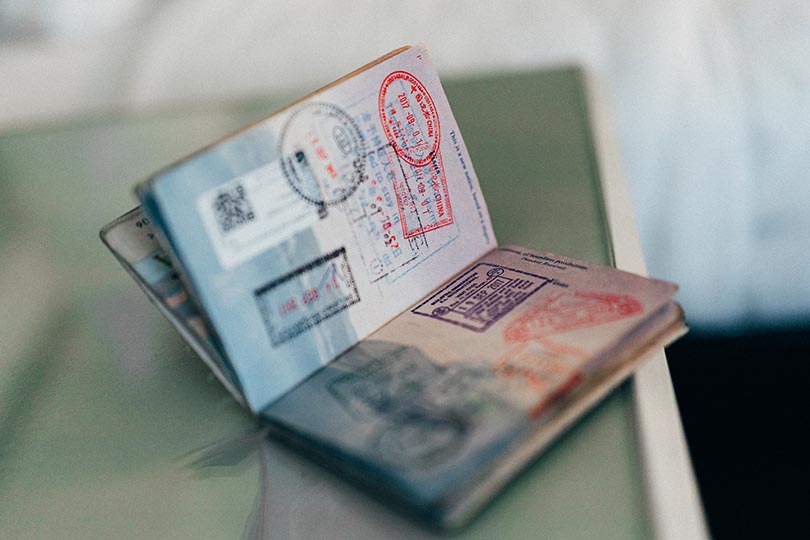If you’re planning a trip to India, understanding the Indian Visa Application process is crucial. India offers various types of visas for different purposes, so whether you’re a tourist, business traveler, or student, there’s likely a visa that suits your needs. In this article, we’ll walk you through everything you need to know about applying for an Indian visa online.
Understanding Indian Visas
Before diving into the application process, let’s take a moment to understand the different types of Indian visas available and their significance.
Types of Indian Visas
India issues various types of visas, each catering to specific purposes. Here are some of the most common ones:
Tourist Visa
The Tourist Visa is perfect for those looking to explore the rich culture, history, and beauty of India. Typically valid for 30 days to six months, this visa allows travelers to visit various tourist destinations across the country.
Business Visa
If you’re traveling to India for business purposes, you’ll need a Business Visa. This visa is usually granted for one year and can be extended based on your business needs. It’s essential for attending meetings, conferences, or establishing a business presence in India. INDIAN VISA ONLINE
Medical Visa
A Medical Visa is required if you’re seeking medical treatment in India. This visa allows patients to stay in the country for the duration of their treatment, with a possibility for family members to accompany them.
Student Visa
For those pursuing educational opportunities, the Student Visa is a must. It typically allows students to stay in India for the duration of their course and is valid for up to five years, depending on the institution.
Importance of Visa
Obtaining the correct visa is essential. Not only does it comply with legal regulations, but it also helps ensure a smooth entry into India. Traveling without the proper visa can lead to complications at immigration, including being denied entry.
Indian Visa Application Process
Now that you know the types of visas, let’s delve into the actual application process. Applying for an Indian visa is straightforward but requires attention to detail.
Eligibility Criteria
Before you apply, make sure you meet the eligibility criteria for the visa type you’re seeking. This may include valid identification, a purpose for your visit, and adherence to any specific requirements outlined by the Indian government.
Required Documents
To successfully apply for an Indian visa, you’ll need to gather the necessary documents. Common requirements include:
- A valid passport with at least six months of validity left
- Passport-sized photographs
- Proof of accommodation
- Travel itinerary
- Financial documents to demonstrate you can support yourself during your stay
Each visa type may have additional specific requirements, so be sure to check the official guidelines.
Applying for an Indian Visa Online
The good news is that applying for an Indian visa has never been easier, thanks to the online application process. Here’s how to do it step-by-step:
Steps to Apply Online
Let’s break down the steps to ensure a smooth application process.
Visit the Official Website
Start by visiting the official Indian visa application website. Here, you’ll find comprehensive information and resources to guide you through the application.
Fill Out the Application Form
After gathering your documents, you’ll need to complete the online application form. Be honest and accurate while filling it out, as any discrepancies may lead to delays or rejections.
Payment of Fees
Once your application is complete, you’ll need to pay the visa fee. The cost varies based on the visa type and your nationality, so be sure to check the fee schedule. Payment can typically be made online using a credit or debit card.
Tracking Your Application
After submission, keep track of your application status through the website. Most applications can be tracked online, giving you peace of mind as you await your visa approval.
Common Mistakes to Avoid
While applying for a visa online, many people make simple mistakes that can delay the process. Here are some common pitfalls to watch out for:
- Inaccurate information: Double-check all entries to ensure they are correct.
- Missing documents: Ensure you’ve attached all required documents before submission.
- Not checking eligibility: Make sure you qualify for the visa type you are applying for.
Conclusion
Applying for an Indian visa may seem daunting, but with the right information and preparation, you can navigate the process smoothly. Remember to choose the right visa type, gather your documents, and follow the steps for online application carefully. By doing so, you’ll be one step closer to exploring the vibrant and diverse culture of India. So, get ready to pack your bags and embark on an unforgettable journey!
FAQs
What is the processing time for an Indian visa?
Processing times can vary based on the visa type and your nationality. Generally, e-Visas are processed within 72 hours, while regular visas may take longer.
Can I apply for an Indian visa if I have a criminal record?
Having a criminal record may complicate your visa application. It’s best to consult with the Indian embassy or consulate for specific advice based on your situation.
How long is an Indian visa valid for?
The validity of an Indian visa depends on the type. Tourist visas can be valid for up to six months, while business and student visas may be valid for longer periods.
Is there a difference between e-Visa and regular visa?
Yes, an e-Visa is an electronic visa that can be applied for online and is generally faster to obtain. A regular visa requires a visit to the Indian embassy or consulate.
What if my visa application is rejected?
If your application is rejected, you will typically receive a reason for the denial. You can address the issues raised and reapply or appeal the decision through the appropriate channels.
